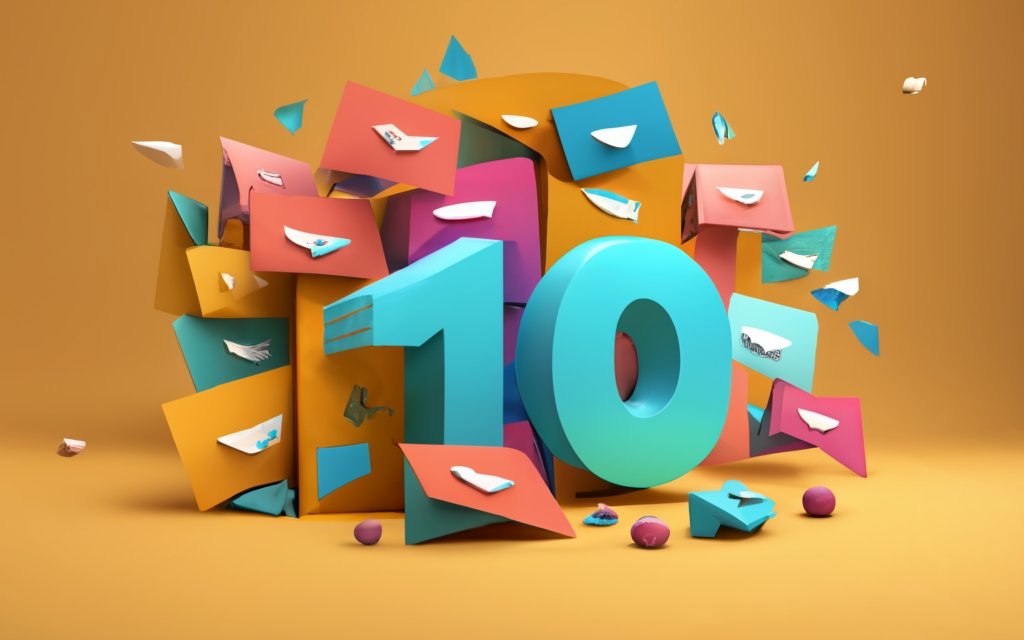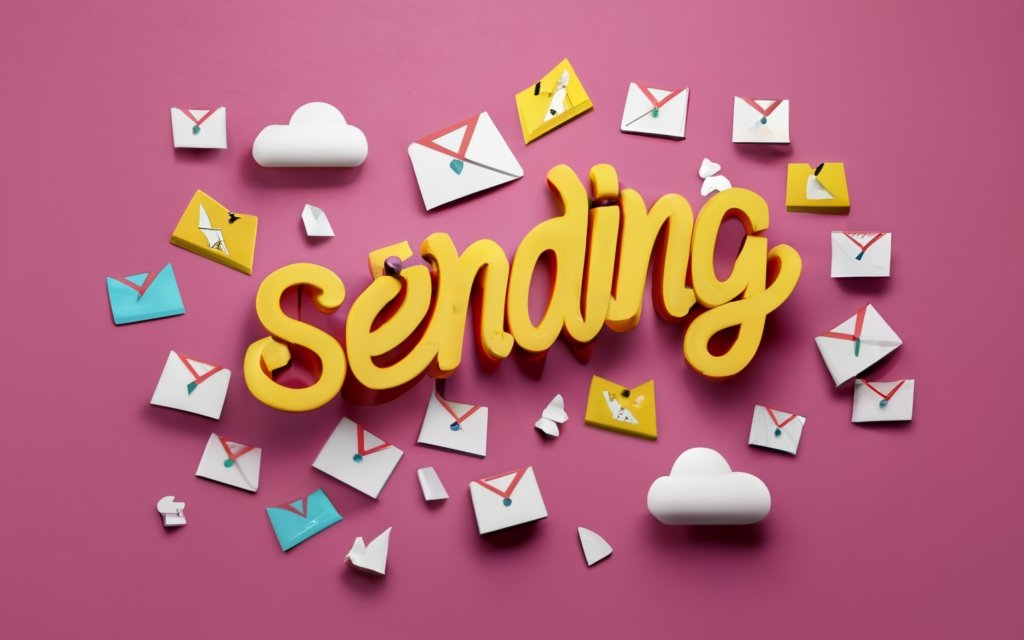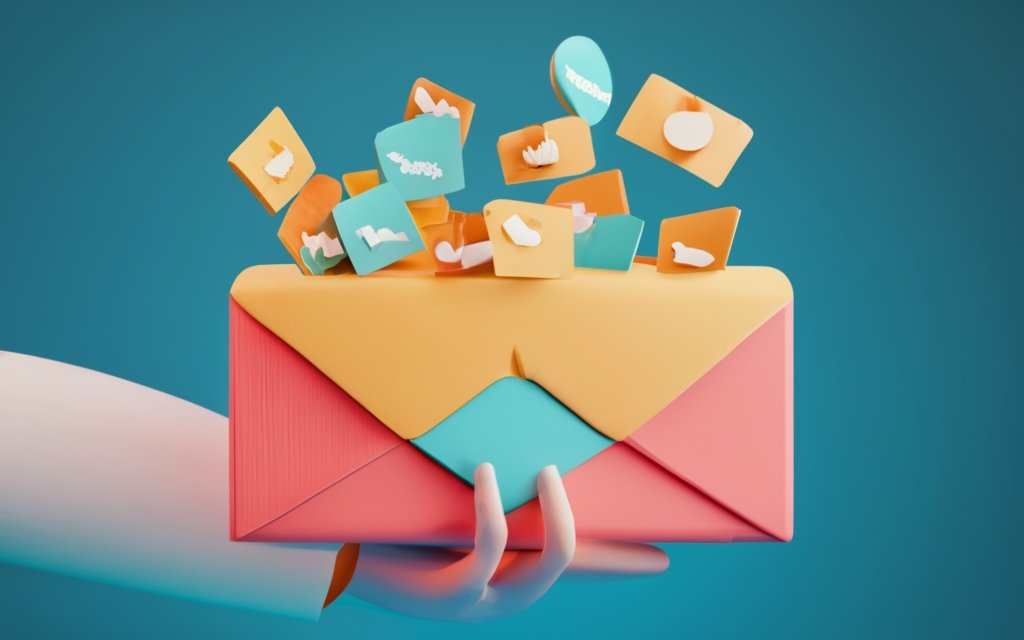Want to blast your marketing messages to a million inboxes? It can transform business growth. But only if executed properly.
This comprehensive guide reveals tips and strategies any brand can use to plan and deploy mega-scale email campaigns that engage, convert, and stay out of the spam folder.
You’ll learn how to:
- Obtain and warmup dedicated IP addresses to maximize deliverability
- Strategically build segmented email lists of highly engaged subscribers
- Write compelling subject lines and copy tailored to each recipient
- Continually test and optimize every campaign element using data
- Automate sends and integrate with your website, CRM, and sales pipelines
- Track performance metrics to lift open, click-through, and conversion rates
- Refresh creative, content types, segments, timing and more to continually improve
Ramping up to a million emails sent takes work. But the payoff can be well worth the effort. Use this guide to grow your email strategy to new heights.
Why Send Bulk Emails?
Sending a high volume of emails – whether it’s 1 million or any other large number—might seem excessive. But when done correctly, bulk email campaigns can be an extremely effective marketing strategy. Here are three key reasons you should consider a mass email approach:
Reach a Wider Audience
One of the biggest advantages of sending bulk emails is being able to get your message out to a much larger group of people. If you only have a few thousand subscribers, you’re severely limiting your potential reach. But by growing your list to 100,000, 500,000 or 1 million contacts, you can expose your brand, products and offers to a lot more potential customers.
This wider audience gives you the opportunity to generate more leads and sales. Even if only a small percentage of recipients open and engage with your email, that can still result in a sizable amount of business if the overall list size is big enough.
For example, if you have 1 million contacts and achieve a 25% open rate with a 2% click rate, that’s still 25,000 opens and 500 clicks—far more engagement than you’d get with a smaller list. The key is continuing to build your list responsibly while also maintaining high deliverability rates.
Increase Brand Awareness
Another benefit of bulk emails is increasing overall awareness of your brand. Each contact on your list gets exposed to your company name, logo, and messaging every time you send a campaign.
This repetition can help establish your brand identity and get potential customers familiar with what you offer. Even if readers don’t engage right away, seeing your brand continually over time makes them more likely to convert when they are ready to make a purchase decision.
With a larger list size, you can reach more people on a consistent basis and accelerate your brand recognition. This helps create “mental availability” where your brand comes top of mind immediately when someone has a related need.
Drive More Sales
At the end of the day, the primary reason any business sends bulk emails is to drive more revenue. And the simple math is that more contacts equals more sales opportunities.
If you have a list of 100,000 qualified subscribers who have opted in to receive your marketing emails, you have 100,000 chances to promote your product or service every time you send a new campaign. Compare that to only being able to market to 1,000 people, and the revenue potential is exponentially higher.
Each person who buys from you after engaging with an email can have a very high customer lifetime value. So a small conversion rate applied to a huge list still results in significant long-term sales and profits.
Beyond sheer size, properly segmenting a large list also lets you target customers with timely, relevant offers tailored to their interests and behavior. This personalization boosts click-through and conversion rates for even higher sales.
Real-Life Examples
- E-commerce company achieved 130% increase in revenue by growing list from 85K to 500K contacts.
- SaaS startup saw paying customers rise 5X after building list to 150,000 and sending targeted nurture campaigns.
- Nonprofit organization tripled donations received by increasing their list size by 400% and sending appeals to engage their new subscribers.
The proof is clear: more emails drives more sales. If your business can handle the increased workload, focus on expanding your list while maintaining high deliverability. The ROI from bulk email campaigns done properly is well worth the effort.

Challenges of Sending 1 Million Emails
While sending high volumes of email can generate great results, it also comes with some unique challenges. Managing an email list and campaign at such a large scale takes extra planning, tools, and effort. Here are some of the key challenges when sending millions of emails:
Avoiding Spam Filters
The number one challenge is making sure your emails avoid spam filters and reach the inbox. Sending bulk mail can trigger red flags with major ISPs like Gmail and Outlook. To avoid being labeled as spam:
- Use a legitimate email service with a reputable IP address and domain. Avoid anything flagged as high risk.
- Warm up any new IP addresses by gradually increasing sending volume over several weeks.
- Keep your email content relevant with no misleading or “spammy” text. Avoid overuse of exclamation points, all-caps, etc.
- Segment your list instead of blasting the same message to everyone. Send targeted content.
- Maintain list hygiene by promptly removing bounces and unsubscribes. Keep complaints below 0.1%.
- Publish an accessible privacy policy and include opt-out links in your emails. Make unsubscribing easy.
- Monitor feedback loops from ISPs and adjust your sending practices. Stay under any volume or complaint limits.
With proper practices, open and click-through rates above industry averages demonstrate your mail is wanted. This helps maintain inbox delivery over time when sending millions of emails.
Managing Deliverability
Deliverability refers to your emails reaching the inbox rather than getting filtered out. It goes hand-in-hand with avoiding spam filters. To maximize deliverability when sending bulk mail:
- Use double opt-in sign up forms to build your list. This verifies subscribers want your mail.
- Send from white labeled IP addresses with good reputations and no past abuse.
- Warm up any new IP addresses with small volumes that gradually increase over several weeks.
- Carefully circumvent any blocks from major email providers like Hotmail or Gmail through proper list building and sending practices.
- Keep a close eye on engagement metrics like open, click-through, and unsubscribe rates. Benchmark against industry averages.
- Continually maintain list hygiene by pruning bounces, unsubscribes, inactive contacts, etc.
- Set up feedback loops with ISPs to monitor complaints and sending reputation. Adjust your campaigns as needed.
- Use authentication protocols like SPF, DKIM, and DMARC to prove you are a legitimate sender.
With constant monitoring and optimization, you can achieve over 90% inbox placement when doing high volume email sends.
Maintaining Compliance
When managing an email list in the millions, you must make sure your campaigns stay compliant with anti-spam laws like the CAN-SPAM Act. Violations can lead to lawsuits or criminal charges.
- Publish a privacy policy and terms of use that adheres to best practices for email marketing.
- Include a working “opt out” link in all campaigns so recipients can easily unsubscribe. Honor all unsubscribe requests promptly.
- Only send to those who have given direct consent. Never buy or rent bulk email lists.
- Ensure you have legitimate physical postal addresses and “from” info in each campaign.
- Clearly identify all commercial messages as advertisements or promotions.
- Monitor and promptly respond to any spam complaints received.
- Stay up-to-date on any changes to anti-spam or consumer protection regulations.
Documenting consent, allowing unsubscribes, and maintaining compliance protects your business when emailing at scale. Just one potential spam violation investigation can become very costly.
Segmenting Your Audience
Trying to send one generic blast to an entire list of 1 million contacts is a recipe for low open and click rates. You need to segment and target smaller groups.
- Divide your master list based on demographics like location, age and gender. Send location-specific content.
- Create groups based on interests like product categories. Send relevant offers.
- Segment by email engagement using levels like high-activity, average, or inactive subscribers. Engage accordingly.
- Personalize subject lines and content with merge tags for first name, location, interests, past purchases, etc.
- Set up behavioral-based automations that send messages based on actions like opening an email, clicking a link, or making a purchase.
- Analyze performance for each segment and adjust your approach. Find what resonates best with each group.
Taking a targeted rather than one-size-fits-all approach keeps engagement high across all of your subscribers when executing large scale email campaigns.
Tracking Performance
It’s essential to closely monitor metrics to continually refine and optimize your campaigns. Key stats to track include:
- Open rate: Percentage of total recipients who open your email. Shoot for 20% or higher.
- Click-through rate: Percentage who click on links inside your email. Aim for 2% minimum.
- Bounce rate: Percentage of emails bounced back due to invalid addresses. Keep below 5% at most.
- Unsubscribe rate: Percentage who opt-out of your emails. Strive for under 0.5% if possible.
- Spam complaints: Feedback from ISPs on recipients marking your mail as spam. Keep under 0.1%.
- Sales conversions: Percentage who complete a desired action like making a purchase. Varies widely by industry.
Use A/B testing and data from past campaigns to systematically optimize your emails for maximum engagement and ROI.

How to Send 1 Million Emails
Ready to execute a high volume email marketing campaign? Sending millions of emails takes thorough planning and preparation. Follow these key steps to run a successful bulk email campaign:
Get Your Own Dedicated IP Address
Rather than using a shared IP address from your email service provider, get your own dedicated IP address. This gives you complete control to build up IP reputation from scratch and avoid issues from past senders.
A new, clean IP lets you properly warm it up and establishes your domain as a trusted sender. It also prevents your emails from being flagged as spam simply for coming from a general mail server IP with a poor reputation.
Pricing is around $20 per month and up. Shop web hosts and specialized SMTP providers to find affordable options. Some email services offer dedicated IPs as add-ons.
Set up the IP with proper SPF, DKIM, and DMARC authentication protocols, reverse DNS records, etc. to verify your sending domain.
Use an Email Service Provider
While it’s possible to run your own email servers, that approach requires extensive technical expertise. Instead, rely on an established email service provider. Look for:
- Specialization in bulk and commercial email sending
- Features like deliverability monitoring, spam testing, and compliance tools
- Dedicated IPs, domain authentication, and inbox placement programs
- Scalability to handle huge volumes without crashing or getting rate limited
- Engagement tracking and advanced analytics capabilities
Providers like MailChimp, SendGrid, MailJet, and Amazon SES are leaders in facilitating massive email campaigns. The added deliverability protection is well worth the cost.
Warm Up Your IP Address
Once you have a dedicated IP set up, take the time to properly warm it up first before sending full blast. Warming up involves gradually increasing your volumes over several weeks.
This gives receiving servers time to recognize you as a legitimate bulk sender and not immediately assume you are a spammer the moment you start blasting millions of emails.
A proper warmup schedule avoids having your IP address blocked. Slowly scale up volumes according to this sample plan:
- Week 1: 5,000 emails per day
- Week 2: 10,000 per day
- Week 3: 25,000 per day
- Week 4: 50,000 per day
- Week 5: 100,000 per day
- Week 6+: 500,000+ per day
Be patient and closely monitor complaint rates, blacklist statuses, and sender reputation throughout the warmup period. It takes diligence, but this process helps establish your dedicated IP’s deliverability long-term.
Carefully Build Your Email List
Building your email marketing list is one of the most important parts of executing successful campaigns. Two key best practices for list building include:
1. Double Opt-In
Always use double opt-in sign up forms. This verifies someone wants to receive your emails and that the address is legitimate.
Rather than immediately subscribing people, send a confirmation email first. Recipients must click to authenticate their opt-in. This extra step improves list quality.
2. List Segmentation
As you build your list, capture relevant data on subscribers like name, demographics, interests, past purchases, etc.
Use this information to segment your contacts into groups for more targeted email sending. You get better engagement when subscribers receive content relevant to them.
Proper list building takes work, but pays off with higher deliverability, open rates, and conversions. Never buy or rent email lists—it will wreck your sender reputation.
Write Engaging Email Copy
With an audience in the millions, every word and phrase in your emails matters. Follow these copywriting tips:
Subject Lines
Subject lines should be attention-grabbing and instill a sense of urgency. Some good tactics include:
- Using the recipient’s name: “Hey Sarah, thought you’d want to see this…”
- Numbers and stats: “Achieve 5x more with our system”
- Deadlines: “Sale ends in 24 hours”
- Questions: “Want to pay less in taxes this year?”
Keep testing to see which approaches generate the highest open rates.
Email Body
- Keep the length concise—shoot for emails that take 20 seconds or less to scan through.
- Break content into short paragraphs for easier mobile reading.
- Use bold text and bullet points to highlight important information.
- Include relevant imagery to reinforce your message and brand.
- Close with a strong call-to-action—not just a generic sign off.
Compelling copy provides value, educates subscribers, and motivates them to open, read, and take action.
Schedule Your Campaigns
Don’t blast everything all at once. Structure your bulk emails into carefully scheduled campaigns. Tactics include:
- Send no more than 5–10 campaigns per week. Too much mail can cause fatigue.
- Test different days of the week and times of day to find when your audience is most engaged. Many find mornings or midweek best.
- Use A/B testing to determine optimal send frequency. Monthly, twice a month, or weekly may work best based on your niche.
- Mix up promotional content with valuable non-sales content like industry articles, how-tos, etc.
- Automate your messages using workflows and triggers like date-based, web visit, cart abandon, purchase, etc.
Systematic scheduling tailored to your audience keeps your emails anticipated rather than seen as an annoyance.
Test and Refine Your Approach
Continually test and refine every aspect of your million email campaigns. Tactics include:
A/B Testing: Send one version to a small portion of your list and another version to a comparable segment. Measure which one drives more opens, clicks, and sales. Testing subject lines, content, designs, etc. helps maximize results.
Engagement Tracking: Use open and click tracking to see which messages and content types perform best. Identify any trends or themes that emerge. Delete content that consistently underperforms.
List Segmenting: Pay attention to which segments have higher than average engagement. Craft more emails targeted specifically for your ideal buyers. Remove contacts who remain inactive after several sends.
Timing Optimization: Switch up the days and times you send to see if certain schedules drive higher response rates. Many find Tuesday-Thursday before 10 AM ideal. But test what resonates best with your own audience.
Integrate With Your Website and CRM
Integrate your bulk email system with your website, landing pages, and CRM platform using APIs or available plugins. This unlocks valuable benefits:
- Automatically add website signups to your email lists using popups or forms.
- Trigger automated emails based on actions website visitors take. For example, send a shopping cart abandonment email if a visitor leaves without purchasing.
- Track sales, leads, and other conversions driven by each campaign back to individual emails and list segments for performance measurement.
- Sync data between your CRM and email system so contacts receive seamless, targeted messaging as they engage across channels.
When executed properly, integration supercharges the results of even your largest bulk email campaigns.
Track and Analyze Results
Closely monitor the performance of every campaign you send. Key metrics to analyze include:
- Open rate: Shooting for 20% or higher open rate indicates your content is engaging.
- Click-through rate: 2%+ is a good click-through benchmark. Higher shows your messages compel readers to act.
- Conversion rate: Count sales, leads, downloads, or other goals achieved from clicks. Strive to continually lift conversion rates through testing and optimization.
- Bounce rate: Keep below 5% maximum. Bounces signal bad addresses you should remove.
- Unsubscribe rate: Lower than 0.5% is ideal, but under 1% is still acceptable. High unsubscribe rates indicate poor content or targeting.
- Spam complaints: Below 0.1% indicates most of your mail is reaching the inbox rather than spam folders.
Compare open, click, and conversion rates for different segments and campaigns. Look for lessons you can apply to drive better results across your entire million email volume.

Email Copywriting Tips
When sending millions of emails, every word matters. Mastering high-converting email copy takes testing and refinement. Use these proven tips to engage subscribers and motivate them to take action:
Keep Content Brief But Compelling
Don’t ramble on endlessly. Email copy should be short, scannable, and to the point. Follow these guidelines:
- Lead with your value proposition or key benefit right away in an opening paragraph or sentence. Get to the meat of your message fast.
- Use bullet points, numbered lists, and bolding to break up walls of text. Make your emails easy to scan and digest.
- Limit paragraphs to 1-4 sentences. Avoid giant blocks of dense copy.
- Cut nominal words that don’t add value. Streamline sentences to be as concise as possible.
- Use layman’s terms. Avoid jargon only an insider would understand. Write for a broad mainstream audience.
- Share just enough information to educate but not overwhelm readers. You can always link to more details.
- Close with a clear CTA rather than trailing off. End strong and motivate subscribers to take action.
Write tight, focused copy that quickly communicates why your offer benefits readers and compels them to learn more or buy.
Use Attention-Grabbing Subject Lines
Subject lines are critical for compelling opens in crowded inboxes. Tactics to make them pop include:
- Address readers directly whenever possible e.g. “Hey Amanda, we miss you!”
- Use urgency cues like “24 hours left!” or “Today only:” to spike open rates
- Ask interesting questions like “What do millions of small businesses have in common?”
- Mention benefits “Get up to 40% off your purchase now”
- Use numbers “See the top 10…”
- Leverage curiosity triggers like “When you see our new widget, your eyes will pop!”
- Test calls-to-action: “Reserve your seat now”
- Try humor: “These funny memes prove spreadsheets can be hilarious”
Keep subject lines short but compelling. Target interests, offer value, and create intrigue.
Personalize Your Messages
Generic “Dear Customer” blasts don’t cut it. Use these personalization tactics:
- Insert first names into subject lines and content whenever possible. This builds rapport and familiarity that earns trust.
- Customize product recommendations based on past purchases, browsing history, etc. Readers want relevance.
- Localize content with location-specific info, events, stores, etc. tailored to each subscriber.
- Send emails based on behaviors and interests like abandoning carts, clicking certain links, expressing intent, etc.
- Create dynamic content blocks with merge tags that display personalized info like name, past orders, etc.
The more targeted and customized your message, the higher engagement and conversions it will drive. Treat each reader as an individual.
Make it Mobile-Friendly
Over half of all emails are opened on mobile. Ensure your campaigns look great on small screens:
- Use a single-column layout. Stacking content works better than multiple columns.
- Increase font size to 16px or higher for easy reading. Bold key points.
- Keep paragraphs short—2-4 sentences maximum. Use lots of white space.
- Make buttons and links finger-friendly, at least 44px wide and tall with ample spacing.
- Add CSS styling to hide non-essential elements on mobile like navigation. Reduce clutter.
Testing your emails on actual devices is a must. If content is hard to read or interact with, response rates will suffer.
Include Appealing Visuals
Text-only emails get far less attention. Include images and graphics strategically:
- Feature products visually. Show them attractively in use when relevant.
- Insert infographics, charts, illustrations of key statistics or steps. Information goes down easier with visuals.
- Use a hero image banner at the top to reinforce your brand and set the tone.
- Break up copy with relevant photographs and videos when possible to add interest.
- Ensure imagery complements your offer rather than distracts. Avoid overly salesy stock photos.
- Optimize images for fast loading—compress JPGs, use PNGs sparingly, enable caching.
Imagery makes emails more eye-catching and engaging when done right. Just don’t go overboard—keep text as the main focus.
Focus on Benefits to the Reader
Avoid overly self-promotional copy that’s all about you. Bring the focus back to helping the reader:
- Highlight how they’ll save time, money or hassle by buying from you or signing up.
- Speak to their desires and goals. Show you understand what motivates them.
- Flaunt expertise and experience that gives readers confidence in your solution.
- Provide social proof with testimonials, big brand logos, or examples of past success.
- Educate subscribers so they make informed decisions, not impulse purchases they later regret.
Readers need to know what’s in it for them. Show how you can solve their problems and move them closer to their ideals.
Use Clear Calls-to-Action
Every email should direct readers toward a next step with a compelling CTA:
- Place your CTA button above the fold so it’s visible without scrolling on most devices.
- Use strong action-oriented verbs like Register, Download, Buy Now, Start Trial, etc.
- Limit to one CTA per email to avoid choice paralysis and maximize clicks.
- Make buttons pop visually using color, size, and placement. Underlined text links blend in.
- Tell readers exactly what to expect if they click—no vagueness or mystery.
Clear calls-to-action drive conversions by giving readers an obvious way to immediately act on your promotional messages and content.

Evaluating Your Million Email Campaign
Once you execute a large scale email campaign, closely analyze performance to find opportunities for improvement. Key metrics to evaluate include:
Open and Click-Through Rates
Open and click-through rates indicate whether your copy and content resonates with subscribers. Benchmark against industry averages:
- Opens: 20%+ open rate is good. Under 15% may signal your subject lines need work.
- Clicks: 0.5-2%+ click-through rate means your content is compelling readers to act. Under 0.5% suggests lower relevancy.
Segment your list and compare open/click rates for different groups. Look for higher than average response rates from your ideal buyers. Leverage what attracts them in future emails.
Conversely, identify segments with lower engagement. Brainstorm ways to improve interest, from improved targeting to refreshed content formats.
Bounce and Spam Rates
Bounce and spam rates help gauge list quality and deliverability. Target under:
- Bounce Rate: Under 5% is ideal, but up to 10% can be acceptable initially. Bounces signal bad or outdated addresses.
- Spam Rate: Below 0.1% indicates your mail is reaching the inbox. Higher rates mean more emails are getting filtered to spam.
Dig into bounced emails and spam complaints/removals to identify any deliverability issues needing attention. This protects your sender reputation when deploying large volumes.
Unsubscribe Rate
Unsubscribe rate is the percentage of recipients who opt-out from your emails. Shoot for:
- 0.5% or less – Indicates very strong interest in your content across subscribers.
- 0.5-1% – Still within acceptable norms for most industries.
- 1-3% – Signals potential issues like poor targeting, irrelevant content, overly salesy tones, etc. Look for ways to refresh your approach to lower unsubscribes.
High unsubscribe rates also hurt your sender reputation with ISPs. Continual list maintenance helps avoid this.
Sales and Leads Generated
Ultimately, the success of any mass email campaign comes down to ROI. Track:
- Sales – What percentage of recipients make a purchase based on your emails? Look at both immediate and long-term conversion data.
- Leads – How many subscribe to your lists, download offers, attend webinars, or take other lead gen actions due to your emails?
- Engagement – Signs like repeat purchases, social shares, and survey feedback also indicate positive customer experiences driven by your messaging.
Compare results across segments and campaigns. Double down on whatever is most effective at driving business growth.
Engagement Metrics
Engagement metrics beyond opens and clicks reveal how recipients interact with your content:
- Scroll depth – What percentage scroll through over 50%, 70%, or 100% of your email content when opened? More scrolling means higher interest.
- Read time – How much time on average do recipients spend reading your email? Longer times signal compelling info.
- Repeats – What share of contacts open and click across multiple campaigns? This core group loves your content.
- Shares/forwards – High social sharing indicates subscribers value your emails enough to spread with friends.
- Surveys – Gauge satisfaction directly by asking subscribers for feedback on content, preferences, etc.
Deep engagement metrics help you dig beneath surface-level data and better understand customer satisfaction. Use these insights to sculpt future million email campaigns that resonate.

Improving Your Next Mass Email
The work doesn’t stop once you send your first million email blast. Continually refine and optimize to keep increasing results over time. Areas to focus on include:
Adjust Your Segmentation and Targeting
Carefully divide and target your massive list to lift engagement and conversions. Tactics include:
Demographics – Send location-specific content tailored to subscribers in each city, region, country, etc. Localized messaging generates higher open and click rates.
Interests – Group contacts by topics like industry, hobbies, purchase history, content downloads, etc. Craft emails aligned to every interest group’s preferences.
Email Activity – Segment engaged subscribers who open and click often from inactive contacts. Prioritize sending more content to your “power users.”
Lead Scores – Calculate lead score formulas using metrics like email opens, site visits, etc. Target hot leads aggressively while nurturing others.
Behavioral Triggers – Send cart abandonment emails if shoppers don’t purchase, request reviews after purchases, offer assistance if they struggle, etc.
New vs Existing – Welcome new subscribers with an onboarding series. Promote advanced features to long-time contacts. Tailor messaging based on lifecycle stage.
Laser-focused targeting and segmentation boosts deliverability by sending readers content they actually want. Obsess over understanding your audience.
Refine Your Subject Lines and Content
Never get complacent with subject lines and copy. Always be testing and optimizing to increase engagement.
A/B Subject Line Testing – Try multiple versions at scale to see which wording, offers, and techniques compel the most opens.
Personalization – Add first names, merge past behaviors/interests, trigger based on actions, etc. to boost relevancy.
Mobile Optimization – Use layouts, formatting, and short paragraphs that make emails easy to digest on small screens.
Refresh Content Types – Evaluate the performance of different content formats like video, long form articles, quizzes, surveys, and re-balance what you send.
Subject Line Retesting – Continually re-evaluate the same subject lines as your list grows. Performance often changes over time as your audience scales.
Quality Over Quantity – Delete consistently underperforming content from your send mix instead of continuing to blast it. Focus on what achieves results.
Value vs Promotional – Mix engaging content that provides value with periodic promotional emails. Over-selling hurts engagement long term.
User Feedback Surveys – Ask subscribers directly for input on the types of content and subject lines they prefer.
Email marketing is never “set it and forget it.” Continually tweak and tailor your copy to keep subscribers engaged.
Test Sending Cadence and Timing
Varying your delivery schedule often boosts email open and click rates. Tactics include:
Days of Week – Track open analytics to identify days your audience is most active. For many, midweek Tuesday-Thursday work best.
Time of Day – Test sending at different times to detect when your subscribers are most likely to open. Morning or mid-day tends to see higher response rates.
Frequency – Evaluate whether more/less frequent delivery increases engagement without causing fatigue. Monthly, twice a month, and weekly are common effective frequencies.
Trigger-Based – Set up flows to automatically email subscribers when they take specific actions rather than just batch blasts. Behavioral triggers boost relevancy.
Scheduled Content – Build an editorial calendar of planned content with different topics, offers, etc. interspersed over a quarter or year.
Varying up your send schedule gives each campaign a better chance of catching recipients at just the right moment for high engagement.
Review Your Email Design and Layout
Refreshing your email template design and layout helps beat banner blindness from overly familiar formats:
- Formatting. New fonts, color schemes, etc. can garner extra attention
- Layout – Switch up column widths, content/image positioning, etc. to improve readability on different devices.
- Content Hierarchy – Use spacing, fonts, and bolding to make the reader path crystal clear. Guide them to take action.
- Image Refresh – Evaluate imagery performance. Replace or resize underperforming visuals for maximum impact.
- Consistent Branding – Update colors, logo size/placement, etc. if needed to stay current with your brand identity.
- Featured Sections – Call attention to key sections with borders, backgrounds, and other graphical treatments. Make them pop.
A fresh new email layout gives subscribers something different that stands out from previous campaigns and the rest of their inbox.
Switch Up Your Calls-to-Action
As campaigns progress, vary your CTAs to find new angles that accelerate response rates:
- CTA Copy – Try different verb phrases like Download, Register, Reserve, Learn More, Shop New Styles, Join Now etc. See what resonates best with each audience segment.
- Curiosity Gaps – Rather than explaining everything, try intriguing CTAs like “See what’s inside…” to entice clicks.
- Button Design – Test button colors, sizes, styles, and placements for maximum visibility and conversions.
- Video CTAs – Incorporate interactive buttons into marketing videos to capture interest.
- Landing Page Testing – Send CTAs to different pre-sales and squeeze pages to see which pages optimize conversions after the click.
- Deadlines – “Limited time left!” CTAs can spike response rates dramatically if used sparingly.
Keep optimizing your CTAs until you find the right recipes to maximize your email click-through-to conversion rates at scale.
Leverage New Features Like AI Writing
Take advantage of the latest innovations in email marketing technology:
- AI Assistant – Let artificial intelligence analyze campaigns and suggest improvements for you to review and implement.
- AI Writing – Use AI to generate initial draft emails or rewrite poor performing copy with optimized versions. Then polish personally before sending.
- Predictive Personalization – Software segments and targets subgroups automatically based on engagement data.
- Smart Recommendations – Leverage algorithms to suggest specific products based on individual subscriber activity.
- Automated Image Creation – Create custom visuals on the fly tailored to the recipient with integrated graphic design tools.
- Upsell Recommendations – Machine learning identifies complementary products to recommend and cross-sell based on past purchases.
- Spam Prediction – AI evaluates your emails and highlights potential issues impacting deliverability.
Cutting edge technology augments human creativity for email campaigns that continually adapt and improve.

Conclusion
Executing high volume email marketing campaigns takes effort. But when done right, a million emails or more can drive impressive growth.
With meticulous list building, copywriting, scheduling and integration, your messages will reach inboxes and engage—not spam folders.
Optimizing deliverability and continually refining your approach through testing enables opening, clicking and conversion rates that maximize ROI long-term.
The key is laying the proper groundwork of:
- Obtaining your own dedicated IP address and properly warming it up
- Building a segmented list focused on double opt-ins
- Writing targeted, benefit-focused copy personalized to each subscriber
- Scheduling sends based on engagement data, not guesswork
- Tracking every metric and optimizing ruthlessly for improvement
With the right email service provider, automation, and segmentation, you can manage million email campaigns efficiently. cores of tactical lessons in this guide equip you to achieve results.
But never take your foot off the gas. Monitor campaigns closely and keep tweaking to stay on the cutting edge.
As your list grows into the millions, fight inertia. Continually refine your creative, technical approach and stack improvements over time.
Recap and Key Takeaways
Million email marketing requires strategy and diligence. But it can greatly amplify an effective omni-channel digital marketing approach.
Remember these core lessons:
- Take time to properly warm up dedicated IPs and focus on whitelisting for deliverability.
- Write magnetically targeted, benefit-focused copy with strong calls to action.
- Schedule campaigns based on engagement data, avoiding repetition and fatigue.
- Personalize every phase using segmentation and behavioral triggers.
- Obsess over open, click, and conversion rates to optimize continually.
- Test and refine to keep improving unlike complacent competitors.
With focus and commitment, you can make high volume email marketing a core driver of sustainable business growth for years to come.

Key Takeaways: How to Send 1 Million Emails
Executing high volume email marketing campaigns takes strategy and effort. Use these core lessons to guide your efforts:
- Warm up dedicated IP addresses properly to avoid deliverability issues when first launching campaigns. Take the time to gradually ramp up volumes.
- Write compelling, benefit-driven copy to capture attention and motivate engagement and conversions. Test and refine continually.
- Leverage segmentation and personalization to send hyper-targeted content tailored to each subscriber’s interests and preferences.
- Schedule campaigns strategically based on past performance data to avoid overloading inboxes.
- Obsess over optimization using open, click, and conversion rates to identify opportunities to improve results.
- Continually refine and test new subject lines, content types, designs, segments, timing, and more to stay ahead of the competition.
With focus and commitment, you can turn high volume email into a core driver of business growth. Use the lessons in this guide to master million email marketing.
Frequently Asked Questions
How many emails can you send per day legally?
There are no hard legal limits on volume, but best practice is keeping daily send volume moderate to avoid spam filters. Start with 50,000-100,000 emails per day from a new IP, and scale up gradually as your sender reputation improves.
Is 1 million emails a day possible?
Yes, sending 1 million emails per day is absolutely possible with the right email service provider, dedicated infrastructure, and deliverability best practices. The key is scaling up volumes slowly so major ISPs recognize you as a legitimate bulk mailer. Exercise patience when ramping up daily send volume.
How much does it cost to send 1 million emails?
Costs vary widely depending on email service provider and features. At basic tiers, expect to pay around $100-200 to send 1 million emails. More advanced services with deliverability tools can run $500-1000+. Dedicated IPs and infrastructure also add to costs.
What is a good open rate for mass email?
For bulk email blasts, an open rate of 20%+ is considered good, indicating compelling subject lines and sender reputation. For targeted segmented campaigns, 25-50%+ open rates can often be achieved. Open rates under 15% suggest potential issues with targeting or subject line quality.
What is a good click rate for mass email?
For mass B2C email blasts, 0.5-2%+ click-through rates are respectable. For targeted campaigns to warm segmented audiences, 3-10%+ CTRs are achievable. Sub 1% suggests content improvement opportunities. Click rate benchmarks vary widely by industry and audience type.
How many emails should be sent per month?
Ideal email send frequency varies based on audience, industry, and objectives. For sales promos and announcements, 1-4 emails per month is fairly typical. For content-heavy newsletters, weekly or twice a month. Test to see what send cadence aligns best with your audience expectations.

